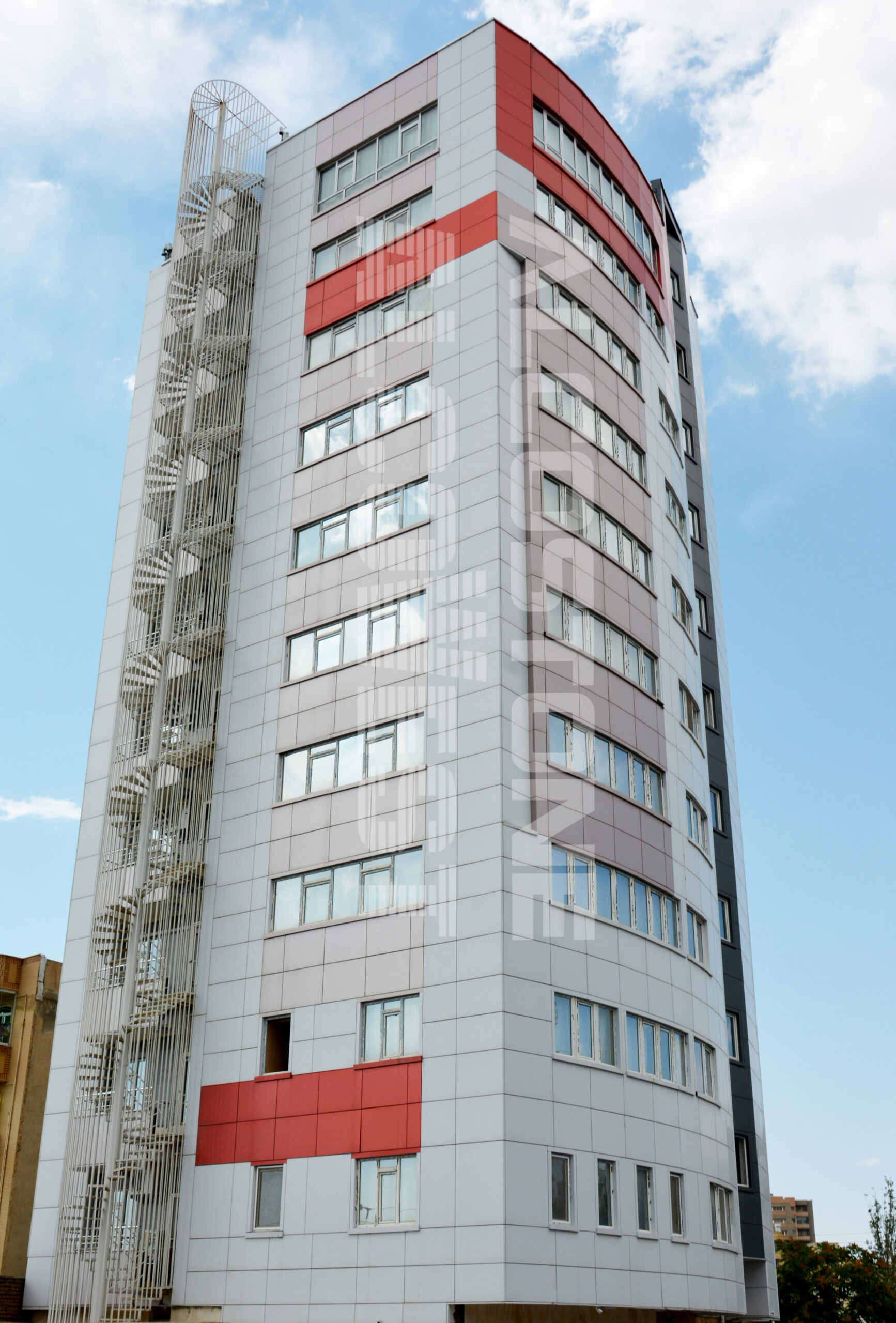Nowadays, aluminum composite panels are considered one of the most well-known and prominent materials for building facades. Their lightweight nature and ability to reduce the building’s load are among the most important features of this material. Additionally, their modern aesthetics and certain physical and chemical properties have made them one of the most unrivaled construction materials.
The quality of aluminum composite panels, due to the use of top-quality raw materials that meet European standards, has consistently positioned ALCOSTONE as one of the most serious competitors to similar foreign brands. Moreover, domestic production of this product has made it more economically viable compared to similar domestic and international brands, attracting the attention of experts and professionals in the construction industry.
ALCOSTONE is a type of aluminum composite panel consisting of aluminum and polyethylene. Using it to adorn any structure is like dressing the building in an aluminum garment to enhance its beauty and protect it.
The use of composite panels is cost-effective and economical. The only limit to creating new and unique designs for any building facade lies in the imagination of the designer, without compromising the quality or durability of the material.
Whether constructing a new building or renovating and restoring an old structure, vibrant and colorful surfaces and beautiful details in facade design will breathe new life into the building.
| Specifications | Explanation |
|---|---|
| Alloy | AA1100 Alloy3003 |
| Thickness | 4-5 mm |
| Thickness of the Aluminum Sheets | 0.3 mm |
| Color Options | PVDF, Metallic, FEVE, and Anti-Stain, Polyester |
| Coating Thickness | 20-30 microns |
| protective layer thickness | 8 µm |
| thickness of the polyethylene core | 3 mm |
| Sound Insulation | A sound insulation performance of 20 decibels (dB) |
| thickness of the resin adhesive layer | 6-7 µm |
| Type of Resin Adhesive | Production Sangshir Pars |
| Sheets are produced as standard with a thickness of 4 mm and dimensions of 3200 x 1250 mm, and in large order volumes, it is also capable of producing with different thicknesses and desired dimensions. | |

Given the importance of designing earthquake-resistant structures in Iran and the view of construction experts and officials to reduce the weight of structures, the importance of using high-tech and lightweight materials in buildings is increasing significantly and the demand for this product is increasing. Buildings and structures that use composite products are much more earthquake-resistant compared to old buildings (which have old designs) and structures that use common materials due to old design views and materials used.
| row | Type of interests | Weight (kg / square meter) | Substructure materials (kg / square meter) | Total (kg/m2) |
|---|---|---|---|---|
| 1 | Granite cm3 | About 81 | About 20 (with iron infrastructure) | 101 |
| 2 | Granite cm3 | About 81 | About 14 (with mortar) | 95 |
| 3 | Cement with a thickness of cm4 | About 78 | — | 78 |
| 4 | Glass mm6 | About 15 | About 12 (with spring structure) | 27 |
| 5 | Aluminum sheet mm3 | About 15 | About 10 | 25 |
| 6 | Composite sheet | About 5, 5 | About 8 | 5 , 13 |